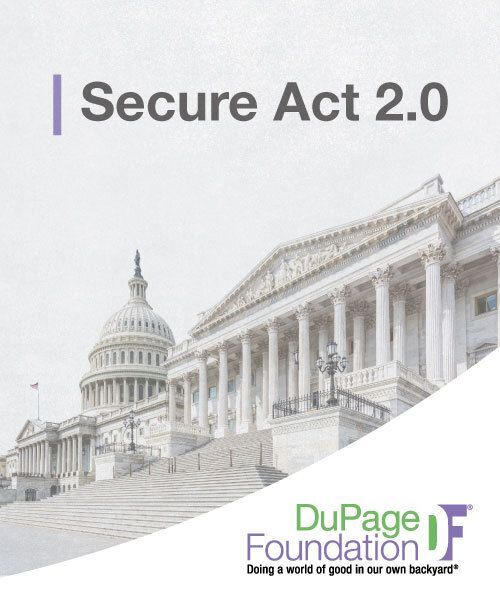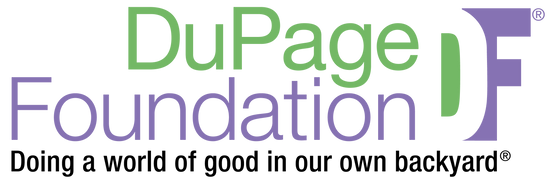
On December 29, 2022, President Biden signed into law the Setting Every Community Up for Retirement Enhancement Act of 2022 (SECURE Act 2.0). The law builds upon the initial SECURE Act, passed in 2019, and includes dozens of new provisions aimed at helping individuals save more effectively for retirement. SECURE Act 2.0 also changes some of the rules governing certain charitable gifts of retirement assets.
Charitable gifts of retirement assets during life and at death remain one of the most powerful and tax-wise strategies for supporting your favorite causes and charities. Updates included in SECURE Act 2.0 impact the annual limits for Qualified Charitable Distributions (QCDs) and include some additional uses for them.
Key Implications of SECURE Act 2.0:
SECURE Act 2.0 includes many new provisions, which you should discuss with your tax and financial advisors. Below are some key highlights of which to be aware:
RMD Changes
Beginning in 2023, SECURE Act 2.0 delays an individual’s first Required Minimum Distribution (RMD) from age 72 to age 73. In 2033, the RMD age will increase again to age 75.
Additionally, SECURE Act 2.0 reduces an individual’s penalty for failing to take RMDs on a timely basis from 50% to 25% of the undistributed amount (or 10% if the error is corrected in a timely fashion).
Catch-Up Contributions
SECURE Act 2.0 provides an opportunity for Americans who haven’t saved sufficiently for retirement to catch up. Effective in 2023, workers aged 50 and older can increase their maximum catch-up contribution amount to an employer-sponsored plan from $6,500 per year to $7,500.
Further, beginning in 2025, workers aged 60 to 63 who participate in employer-sponsored plans will have their eligible catch-up contribution limit increase to the greater of $10,000 or 50% more than the regular catch-up amount. This amount will be indexed annually for inflation.
However, there is one caveat to these limit increases: all catch-up contributions to employer-sponsored plans made at age 50 and older will need to be made to a Roth account in after-tax dollars for those earning more than $145,000 in the previous calendar year. Individuals earning $145,000 or less (to be adjusted for inflation going forward) will be exempt from the Roth requirement.
Also, beginning in 2024, catch-up contributions to IRAs, currently limited to $1,000 per year, will be adjusted for inflation in increments of $100.
Higher Education – Student Loan Repayments and Rollovers of 529 Plans to Roth IRAs
To help young workers begin saving for retirement, beginning in 2024, SECURE Act 2.0 enables employers to match a percentage of what an employee is paying in student loans and apply the amount to the employee’s retirement plan.
For individuals with 529 plans, beginning in 2024, SECURE Act 2.0 will allow up to $35,000 to be moved from a 529 plan directly into a Roth IRA for the same individual who was the beneficiary of the plan. Special conditions apply, including that the 529 plan must have been maintained for at least 15 years. Also, 529 plan contributions made in the previous five years and their related earnings are ineligible for rollover.
Charitable Giving – Qualified Charitable Distributions (QCDs)
For individuals aged 70½ and older, Qualified Charitable Distributions (QCDs) remain an excellent option to accomplish their charitable giving. SECURE Act 2.0 allows for an increase to the maximum annual limit for QCDs and provides new opportunities for their use.
- Increase in the Annual QCD Limit
For 2023, the maximum QCD limit will remain $100,000 per individual and $200,000 per married couple. Beginning in 2024, the maximum limit will be indexed annually for inflation, meaning it will increase year to year.
- One-Time QCD to a Life Income Vehicle
SECURE Act 2.0 now permits IRA owners aged 70½ and older to make a one-time election of up to $50,000 from a QCD to create either a Charitable Gift Annuity (CGA) or a Charitable Remainder Trust (CRT), which provide income for life or a period of years to the donor or other beneficiaries. However, under the SECURE ACT 2.0’s provisions, QCD elections cannot go to existing CGAs or CRTs and must be used exclusively to fund the vehicle being created. Further, when utilizing QCDs, the only beneficiaries allowed are the IRA account owner and their spouse.
Consistent with previous regulations, QCDs are not tax deductible because the IRA withdrawal is not included in the donor’s taxable income.
Whether using QCDs to make outright charitable contributions to support your favorite causes, including DuPage Foundation, or taking advantage of this new opportunity to generate income for you or your spouse, QCDs remain a tax-savvy tool to support the causes that matter most to you.
As a reminder, QCDs cannot support donor-advised funds, private foundations, or supporting organizations or pay for event tickets. For more information on giving through Qualified Charitable Distributions, learn more here.
From simple outright gifts to complex charitable giving strategies, DuPage Foundation’s Advancement Team is here to help answer your questions and work with you to create a charitable plan to achieve your personal goals. Contact us to learn more.
Yashica Weeks, MS, CFRE Kaitlyn M. Balsewicz, CFRE
Director of Gift Planning Assistant Director of Donor Services
630.598.5288 630.598.5292
yashica@dupagefoundation.org kait@dupagefoundation.org
The content provided above and throughout this website is for informational purposes only and should not be construed as or relied upon as legal or tax advice. DuPage Foundation does not provide legal or tax advice and recommends that you consult with your tax attorney and other members of your professional advisor team prior to making a significant charitable gift.

